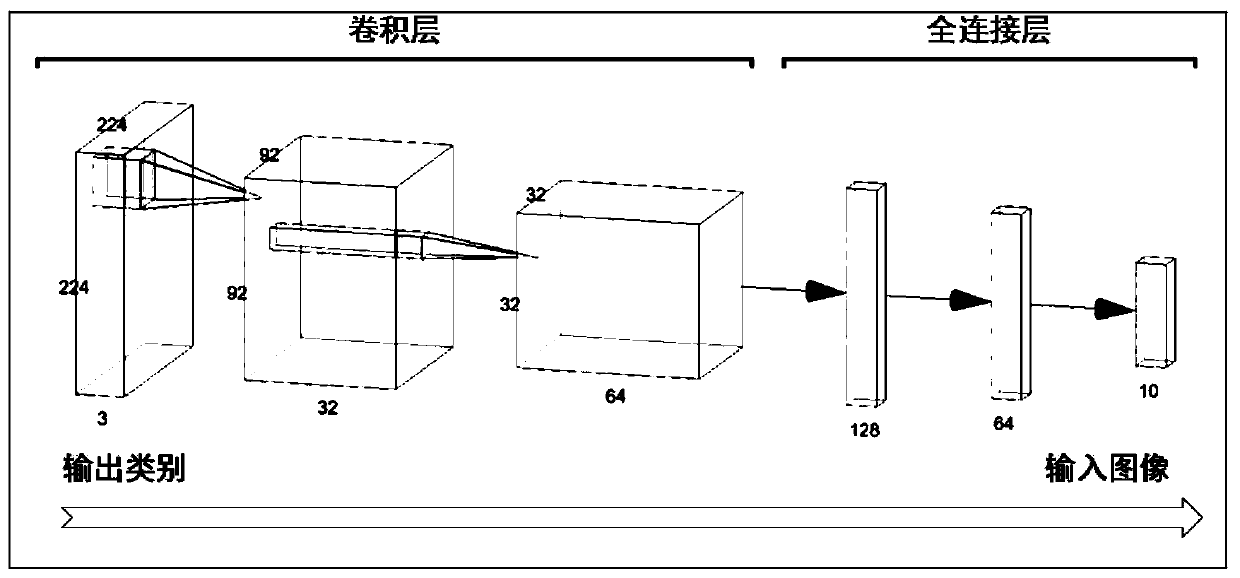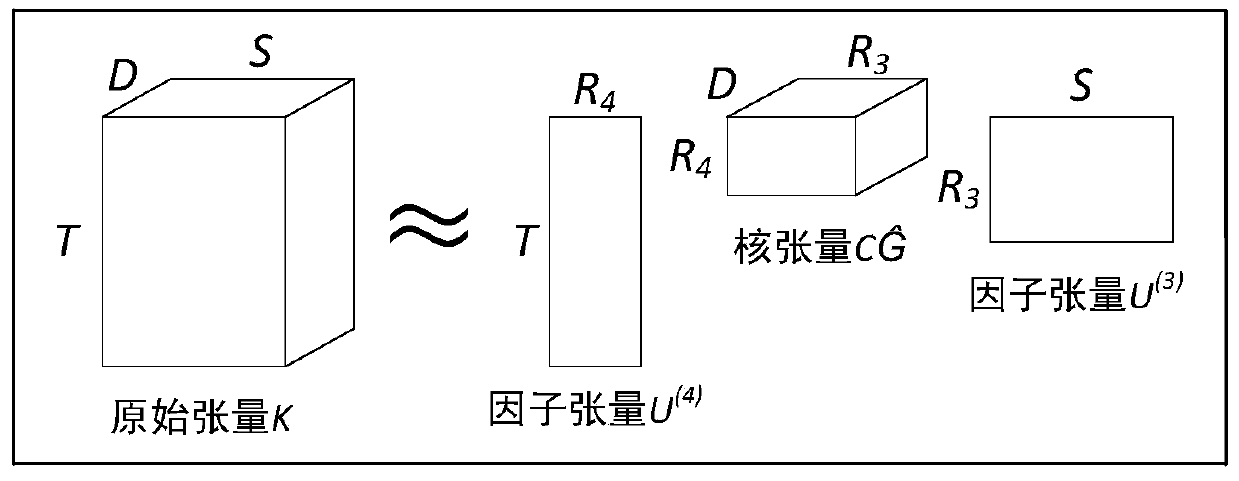Deep convolutional neural network compression method based on Tucker algorithm
A deep convolution and neural network technology, applied in the field of deep neural network, can solve the problems of difficult to compress a large number of parameters and huge amount of calculation, and achieve the effect of reducing compression time and system overhead, avoiding convolution kernels, and high compression multiples.
- Summary
- Abstract
- Description
- Claims
- Application Information
AI Technical Summary
Problems solved by technology
Method used
Image
Examples
Embodiment Construction
[0060] Such as figure 1 Shown the present invention is based on the depth convolutional neural network compression method of Tucker algorithm, comprises:
[0061] A. Obtain a deep convolutional neural network model, the deep convolutional neural network model can be deep convolutional neural network models such as AlexNet, VGG or ResNet, adopt the ResNet deep convolutional neural network model in the present embodiment, as figure 2 As shown, the ResNet deep convolutional neural network model includes a convolutional layer and a fully connected layer.
[0062] B. use the EVBMF algorithm (empirical variational Bayesian matrix decomposition, Empirical Variational BayesMatrix Factorization) to estimate the decomposition rank of each hidden layer parameter in the described depth convolutional neural network model successively, specifically:
[0063] B1. Traverse each convolutional layer of the deep convolutional neural network model in turn, and extract the kernel parameter K∈R o...
PUM
 Login to View More
Login to View More Abstract
Description
Claims
Application Information
 Login to View More
Login to View More - R&D
- Intellectual Property
- Life Sciences
- Materials
- Tech Scout
- Unparalleled Data Quality
- Higher Quality Content
- 60% Fewer Hallucinations
Browse by: Latest US Patents, China's latest patents, Technical Efficacy Thesaurus, Application Domain, Technology Topic, Popular Technical Reports.
© 2025 PatSnap. All rights reserved.Legal|Privacy policy|Modern Slavery Act Transparency Statement|Sitemap|About US| Contact US: help@patsnap.com



